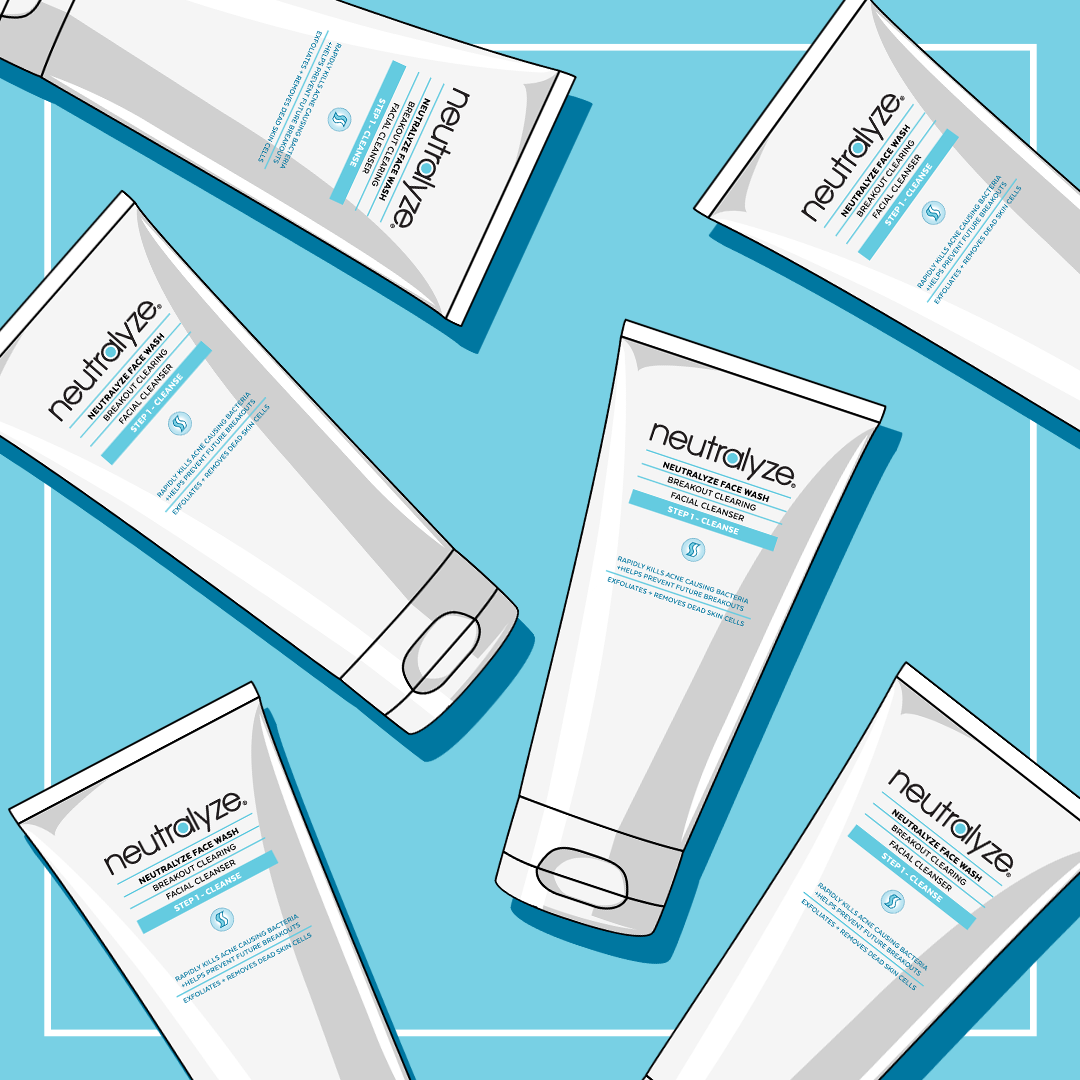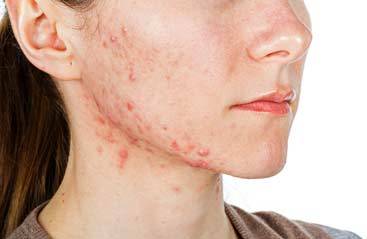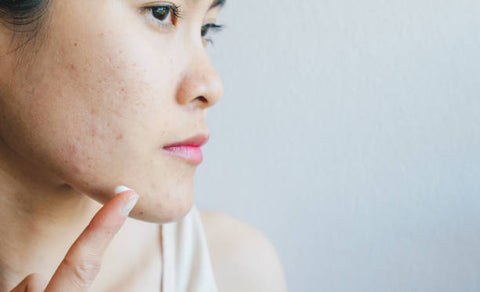Best Acne Face Wash for Cystic Breakouts

Acne breakouts are distressing enough as they are, but even more so if you happen to have the cystic type of acne. Cystic acne is often called severe acne due to symptoms like painful, pus-filled pimples that are most likely to scar.
While an estimated 80%of the population may experience acne breakouts at some point in their lives, a relatively small fraction of that experiences severe acne. If you happen to be one of those who are enduring cystic acne, don’t lose hope. With the advances in medicine today, certain skincare products can now help alleviate its symptoms.
But first, let’s find out more about cystic acne, its symptoms, and what causes it.
What Is Cystic Acne?
Cystic acne is a severe form of acne characterized by red, tender lesions that tend to last longer than your usual breakout. While regular acne typically develops near the surface of the skin due to clogged pores, cystic acne often extends deep into the skin. It forms nodules and cysts and is generally more painful. Since cystic acne forms under the skin, it tends to remain there and cause swelling in the area.
Besides the physical pain that comes with the inflamed nodules, cystic acne can also have intense emotional and psychological effects on the affected individual. This is because the changes in their appearance and the scars that cystic acne tends to leave behind can lead them to have a negative self-imageand low self-esteem.
What Are the Common Symptoms of Cystic Acne?
Cystic acne flare-ups often cover a lot of areas, like the face, neck, shoulders, chest, and back. The chin and jawline are the most prominent spots where cystic acne often develops on the face. In some cases, breakouts occur behind the ears and even on the buttocks.
They’re often large in size and red in color, but cystic acne breakouts can still be accompanied by whiteheads and blackheads. An important distinction is that these are usually filled with pus, hence the painful swelling. They may even appear like boils on your skin.
Because they develop deep under the skin, cystic acne may take a long time before they drain or heal. When they finally do, occurrences of scarring or permanent marks are fairly common. These marks may take the form of deep, tiny holes sometimes called icepick scars, large, uneven depressions on the skin, or wide pits.
Popping pimples is never recommended, but especially when you have cystic acne. If a cyst bursts, infection can spread, leading to more breakouts. This may also lead to scarring and discoloration.
What Causes Cystic Acne? Doctors have yet to pinpoint the exact cause of cystic acne, but as with regular acne, risk factors play a big role. Some of these risk factors include changes in hormonal balance like in puberty. Teens and people in their 20s are more likely to develop cystic acne, although older individuals may also experience it.
Genetics can also play a contributing role as people whose parents have had cystic acne are more likely to develop it. Other factors include using greasy, comedogenic cosmetics and skincare products, reactions to medications like corticosteroids, phenytoin, isoniazid, and lithium, and hormonal changes due to menstruation, pregnancy, menopause, stress, and hormone therapy.
It’s also more common in men, although women can experience breakouts as well, especially in the lower half of the face, like the chin and jaw area.
What Cleansers Work Best on Cystic Acne?
When dealing with acne, especially cystic acne, skincare plays a vital role. Choosing the right cleanser for cystic acne is the best way to start since it helps in clearing out oil, dirt, and makeup.
There are many types of cleansers available, and it’s important to note their active ingredients and how they can prevent or address cystic acne.
Foam Cleanser
One of the more popular types of cleansers, foam cleanser works up a lather when combined with water. Its foaming effect is typically caused by the ingredient sodium lauryl sulfate (SLS), which has been known to have a drying effect on the skin, sometimes causing irritation.
As such, it’s not recommended for those with sensitive skin. However, sulfate-free formulations have become available, and they use unique applicators instead to create the foaming effect.
When choosing a foam cleanser for acne-prone skin, be sure to check that it’s free from harsh ingredients. It’s best to go with those that contain natural ingredients like aloe vera for moisturizing and hydration, and salicylic acid for deep skin exfoliation.
Micellar Cleanser
Micellar cleanser is a popular skincare product consisting of purified water, moisturizers, and mild surfactants. It derives its name from micelles, an aggregate of molecules formed by the mild surfactants that help remove oil and dirt from the skin.
Since it doesn’t include alcohol in its ingredients, it can promote skin hydration and reduce irritation. It can also help in reducing inflammation, which is useful when dealing with the inflamed lesions of cystic acne.
Its soap- and alcohol-free ingredients also make it a good option for people with sensitive skin. However, it should be noted that because of its mild nature, it might not do a thorough job in cleaning, hence the need for a second type of cleanser after using it.
Gel Cleanser
As its name suggests, gel cleanser has a gel-like consistency that’s specifically designed for deep cleansing. It’s water-based and made of mild ingredients like essential oils and flower extracts, making it ideal for sensitive and acne-prone skin.
It’s less likely to cause irritation while still cleaning out your pores of dirt and excess oil. It’s common for gel cleansers to have an antiseptic formula as well, so they can reduce any acne-causing bacteria you may have on your skin.
The mild ingredients also help ensure that your skin isn’t completely stripped of its natural oils. With their soothing and moisturizing properties, gel cleansers can help in both fighting and preventing cystic acne.
Oil Cleanser
While using an oil-based cleanser may sound counterintuitive when you’re aiming to remove excess oil and dirt on your skin, it’s actually effective in removing debris clogging your pores without drying your skin.
Oil cleansers, as their name suggests, have an oil base that’s combined with mild surfactants to help remove dirt without disturbing the skin barrier. They’re very gentle on the skin and are especially effective in removing makeup.
However, they’re typically viewed as the first step in a double-cleansing ritual or as pre-cleansers for regular deep-cleansing products.
Clay Cleanser
Clay cleansers use a clay mixture to draw off excess oils and debris from your pores. They’re also known for their detoxifying benefits, similar to clay masks from which they’re inspired. Because of their effectivity in cleaning out pores and easing congestions in the skin, they’re ideal for oily and acne-prone skin.
But while they may be very effective in removing excess oil, they’re not so effective when it comes to make-up. Because of this, they’re usually considered as the second step in a double-cleansing routine.
Powder Cleanser
Powder cleansers are powdery and soft when dry but turn creamy or foamy when mixed with water on the skin. They’re typically composed of finely milled ingredients like oats, seeds, and rice starch. Because of this formulation, they possess good exfoliating properties while thoroughly cleansing your skin.
Since they contain fewer additives, powder cleansers are also less likely to contain irritants. This is good news for those with sensitive and acne-prone skin. However, this also means that they offer fewer benefits and may not have moisturizing effects, unlike other cleansers.
Cream Cleanser
Cream cleanser, also known as lotion cleanser, is usually thick and creamy, with a heavier consistency compared to other cleansers. It’s also deeply moisturizing due to its mild, hydrating ingredients, which may include natural oils or nature-derived formulations.
It gently cleanses the skin of oil and makeup, without stripping it of its natural oils. As it leaves a creamy feeling afterwards, it’s ideal for dry skin, although it’s also great for all skin types during cold weather.
The best cream cleansers for cystic acne contain salicylic acid, which has anti-microbial and anti-inflammatory properties, and mandelic acid, which can help clear pores and combat acne scars. This combination has been clinically proven to be effective in reducing redness and irritation on acne-prone skin.
Balm, Milk, and Bar Cleansers
Other cleansers like balm, milk, and bar cleansers are generally not recommended for acne-prone skin as they can risk further breakouts and congestion. This is because these cleansers typically have a heavier and thicker consistency. In the case of bar cleansers, they may do the job of cleaning the pores, but they can rid your skin of its natural oils, further increasing the risk of irritation and inflammation.
Recommended Skincare Regimen for Acne-Prone Skin
Practicing a skincare routine specifically designed for acne-prone skin can go a long way in preventing breakouts. Here are some of the ways that you can care for your skin especially when you’re at risk for cystic acne.
1. Wash your face twice a day with a dedicated cystic acne face wash or cleanser.
Face wash or cleansers play an important role in keeping your face clean and free from dirt and excess oil. The best acne face wash is formulated to clear out clogged pores while still being gentle on the skin. This is important because if you have acne-prone skin, you’d want to stay away from ingredients that cause irritation and inflammation as much as possible.
Take care not to scrub too hard when you wash your face. You should be gentle when applying your skincare products, using only the tips of your fingers with light pressure. Afterwards, pat your face dry with a soft towel.
2. Use a toner to help remove leftover cleanser residue.
After washing your face with a cystic acne wash, the next step is to apply a toner. This is to help remove excess oil and any makeup or cleanser residue. As with face wash and cleansers, be sure to pay careful attention to the ingredients of the toner you’re using. Stay away from toners with high alcohol content as this can have a drying effect on your skin.
Do note that if your skin is particularly sensitive and doesn’t react well to toners, you may skip this part. Also, if you’re on acne medications like isotretinoin, it’s recommended you skip this step and go straight to applying the medication.
3. Apply an oil-free moisturizer.
Moisturizers help keep your skin hydrated and healthy. This is particularly important if you’re using acne medications as they can be drying on your skin. When picking out a moisturizer, choose one that’s oil-free so that it doesn’t leave a greasy feeling on your skin. Make sure it’s also labeled non-comedogenic and contains exfoliating ingredients like salicylic acid.
Cystic acne, while definitely distressing, is not impossible to manage. By using the best face wash for cystic breakouts and following a skincare regimen specifically suited for acne-prone skin, you’ll be in a better position to taking control of your acne situation.


